|
Canyoning is like a natural obstacle course going down a stream. You find all sorts of slides, drops, jumps, scrambles and bits to avoid on the way from the top to the bottom of the canyon. We have some great canyons here on the west coast of Scotland and today I was exploring one of them with a whole bunch of great canyon guides for the very excellent Active Highs. With the summer season started already we were doing some staff training to share knowledge of the canyons and also of how to run them with groups of people. They looked after me very well indeed and we all learned lots. We also looked at their rock climbing site where there is a nice single pitch rock climb and abseil. We looked at how to set up this, how to run a climbing session with a group of people and how to solve simple problems. The sun was out and it was a beautiful day after a wee frost. The sun is up early though and it soon warms up. The water is pretty cold though, there is still a lot of snow melting away gradually.
0 Comments
Each spring we get one last fall of fresh snow at about this time. It's when the lambs are being born and when you think the snow has given up for the winter. So Connor, Alex, Mark and I had a slightly snowy climb of Castle Ridge on Ben Nevis today. It also made the descent very smooth. There is quite a lot of fresh snow above 1000m, about 30cm or so in places. However it is all soft and wet and not very helpful. On the rocks it covers up the hand and foot holds and is not very supportive. So it looks lovely but isn't very useful. Most of Castle Ridge was clear of snow though so we were not held up at all. We were on quite dry rock all the way to the first crux, a corner with slightly rounded and nearly always wet holds. The second crux was dry and really quite nice but getting there was probably harder today. There is a slab which is awkward to get onto and which was covered in snow so we needed to uncover the holds before we could use them. All very delicate for a few metres. Above the second crux the ridge is very fine indeed. It is narrow and interesting with great exposure. Since South Castle Gully is still full of snow we went to descend this. South Castle Gully is my favourite grade 1 gully on Ben Nevis and possibly anywhere. Steepe and very big walls line the top half of it. It's pretty easy to get into from the side and gave us a brilliant slide all the way down to the bottom steep bit. Here there is an abseil to do which got us to the bottom snow slope and a quick slide to the bottom of the climb. What a great way to get back down again!
During last week and this week we have been running a Summer Mountain Leader Training Course with West Highland College. It's been brilliant working with twelve enthusiastic trainees and showing them everything we know about leading groups on summer walks in the mountains. We split the course into two 3 day chunks and this week we finished the course with practice dealing with incidents and accidents, self-rescue and stream crossings, and our two day wild camping expedition. We started the expedition from Insh, near Spean Bridge. We went up to Beinn Chlianaig and Cnap Chruin doing lots of navigation training, practicing leadership and group management and learning lots about the environment and land management. There were lots of new born lambs low down on the hills and we were very careful not to disturb any of the sheep by walking slowly and keeping away from the sheep. The tops of these two hills are beatufully smooth in places with moss and lichen, making the walking very easy going. We also had amazing views onto the Grey Coires and Stob Coire Easainn. We went down to camp on the south side of Sgurr Innse. It was all a bit rough and wet here but we managed to find enough space for all of our tents and we had a dry night. The moon was shining and there were few clouds so it was bright enough for our night navigation training. Even so, we could not see any detais in the shape of the ground so we had to see poor visibility techniques to find our way around. Today we traverse around Sgurr Innse and climbed up Cruach Innse. Both of these corbetts are rough and rocky, Sgurr Innse in particular. We looked for some steep broken ground to practice some more safe guarding on this kind of ground and we found plenty! Again the top of Cruach Innse is short moss and lichen making the going easy. We also had some great rainbows from the sunshine and showery weather. It was cold though and the showers were of snow at 850m and above. So our twelve trainees are now in their consolidation phase. They need to go out and get more experience and practice everything we have gone through on the course. With six packed days of training there is a lot to remember and to practice! Well done to all of you and thank you for your efforts on the course. I hope we get to see again in the future, working as mountain leaders after a successful assessment course.
Third and fourth year students on an Adventure degree at West Highland College get to plan and carry out an expedition. This year students will be going to Morocco, Mongolia, Georgia and Iceland. Unfortunately I will not be going with any of them but I did spend today with three students who will be going to Iceland. They have a ten day trip to explore some of the mountains and ice caps there and today we were looking at some skills to help with late snow patches, snow bridges over streams, stream crossing, glacier travel and crevasse rescue. We went up Ben Nevis to the Allt a Mhuilinn a bit above the CIC Hut. The snow cover has been melting away much faster than I thought it would. Just six days ago I walked across a snow bridge covering the stream about 500m below the CIC Hut - today there was no snow there at all. We had very deep snow covering the stream a month ago and it is melting and breaking up now, but also the snow is still covering the stream in many places. There are lots of places where you could easily fall through the snow into the stream. This would be a horrible accident and it would be very hard to get out in some places. I remember a couple of accidents when people fell into the cavern underneath the snow at the foot of Number Five Gully. If you go up the gully or onto Ledge Route do take care. It is very hard to be sure the snow is solid beneath you and not just covering a big cavern. Today we found some excellent bits to practice glacier travel and crevasse rescue. It all had a sense of realism too with the streams underneath! It's mnot all about pully systems and hoists. There is a lot to know about glacier travel, avoiding crevasses in the first place, and methods of extraction without resorting to using a hoist off a buried axe anchor. We did the pully syustem as well though and my rucksack was successfully rescued a couple of times! None of the big ice climbs are still complete. They all have water running down sections of them and even the great ridges do not have much snow on them now. You can get up Castle Ridge without touching snow, Ledge Route has patchy cover, Tower Ridge is the same. The coires are full of snow as are the big easy gullies. The bum slide down the Red Burn is still excellent though! So I guess we will not be doing any more ice climbing this year. It is surprising to me how quickly it all went. My last winter climb was Point Five Gully exactly three weeks ago and it started to warm up straight after that day. We can get some late cold spells and falls of snow in late April and May. If it cools down a bit the big gullies will be very nice to climb too and the skiing is really good. Don't hang around though, it's melting fast.
Summer mountain leaders should not plan on using a rope in their routes. However, it's possible that something might go wrong and they end up in an emergency situation. So on an ML training course we cover techniques to safeguard people with a rope on scrambling type terrain so that leaders will be able to do so in the event of an emergency. We selected anchors and rated them for stability, we tied the end of a rope to them and checked it would not roll off, and we linked this with a belay set up to hold the rope on someone climbing down. All of this is done with just the rope; no slings, karabiners or harnesses allowed! We also looked at how the leaders can safeguard themselves going down the same bit of ground. Angel Wings, a Classic Abseil and a South African Abseil were all practiced on different gradients and the advantages of each technique were learned. It's worth remembering that there was a time before abseiling was invented. Mummery traversed The Grepon above Chamonix and had to escend a rope hand over hand because nobody had worked out how to slide down the rope in an abseil! It was mostly dry today. The warm front that passed over Scotland from south to north was very weak and didn't give us much rain. It's certainly pretty warm and will be even warmer again tomorrow. The snow is melting and the streams are quite full of snow melt water. I'm not looking forward to practicing stream crossings next week in the cold water!
This week we are delivering a Summer Mountain Leader Training Course. This is a Mountain Training course of six days that covers a whole range of stuff to do with leading walking groups in the UK and Ireland in summer conditions. Yesterday we looked at the scope of the award and introduced lots of navigation skills. Today was all about leadership, from simple paths to steep, broken ground and everything in between. We started up the Pony Track on Ben Nevis and left this just before the new wooden bridge to climb up the SW Rib of Meall an t'Suidhe. This is a grade 1 scramble if you take the hardest line and we took a more moderate line through heather and rocky filled grooves and steps. It's a brilliant way up Meall an t'Suidhe which is itself a grand view point. We got the view today as well once the over night rain cleared away this morning. It was windy though! The snow melt has been getting faster as the temperature continues to rise slowly and with the rain. The Ben Nevis Mountain Track (AKA Pony Track) has patches of snow up to corner 4 above the Red Burn and more continuous snow cover from there to the top. It is still just under 2m deep on the summit though!
Hannah, Lizzie and Louie made quick work of their walk up Ben Nevis today. It was a nice, calm, cool day and with great views. The snow cover has been melting away steadily and the track is showing some signs of coming out from underneath the snow pack. On top it was slightly warmer today and it wasn't completely necessary to wear the crampons. Really good to have them with you though and they did make it easier on the snow for the team today. The trend in the weather forecast is for the freezing level to remain above the summits for a while so we should expect the snow to continue to slowly melt away.
We have had two teams walking up Ben Nevis over the last two days so if you are interested in the snow cover right now these pictures will help. Yesterday Jo celebrated her birthday by taking her family up Ben Nevis with Andy, one of our walking guides. They all did really well and also got some nice views of dramatic clouds coming in with some slightly worse weather. We had a little rain yesterday evening but not very much and the snow is only melting away slowly.
For the last two days I was back in Knoydart again for some Corbeteering with Jim and Aileen. Corbett's are rightly regarded as being harder than Munro's to complete. Walking up all the Munros is a big task and one that will take you right across the country. But Corbett's are less popular and therefore have fewer paths. They also have a drop on all sides of 500' so there are no easy ridge walks that get you several Corbett's. Beinn an Aodainn lies right in the hart of Knoydart and epitomises everything about a Corbett. Just getting to the start point along the Kinlochhourn road is a bit of a mission. You then have 12km of the shore of Loch Cuaich to go along, the first half of which has no path. It is of course flat but it is certainly not level. The going is over rough tussocks of grass and heather. The second half is along a track that emerges from the loch. Loch Cuaich is a reservoir flodded in the 1930's I think and there are houses, roads and tracks under the water still. When you see a well made stalkers path or track that ends by entering the loch it is because the path was there well before the loch. We went with the plan to spend the night at the two dams at the far end of Loch Cuaich. This worked out very well, we found a lovely camping site next to some big boulders for shelter. We were not the first to camp there and we carried out some rubbish left by previous campers. The morning was breezy and cloudy on the tops. We followed the east ridge all the way to the top of Beinn an Aodainn which is brilliant. It is long, interesting and very narrow in places. The rocks are amazing too. Solid, rough gniess in swirly patterns and huge slabs. Just before we reached the top the clouds broke apart and we got to see the very impressive views from the top. The Saddle and the Forcan Ridge were clear, Rum, Rois Bheinn and countless other hills were set out for us with sunshine and clouds blowing past the biggest peaks. All you could see was rough, wild mountainous landscape with no apparent touch of man at all. Knoydart certainly is one of the last great wild areas in the country. We came back down snow slopes in the coire on the east side of the peak. There is still serious snow cover on all the summits and the snow today was soft enough to make it very easy and quick to descend. Take care you don't fall through into a stream though. We packed up the tents and walked back around by the loch, looking back on another very fine Corbett and another brilliant experience of wilderness. It has been a harsh winter and the deer are certainly paying the toll. We saw six deer carcasses of recently dead deer in just a few kilometres along the loch shore. Deer are forest dwelling animals and we cut down the forest a few hundred years ago. Now, the deer stop the forest from growing again by eating the sapling trees as soon as they start to grow. With no natural predators the deer multiply at a greater rate than they would do normally and sometimes there is not enough food or shelter for them in the winter. The remnants of the ancient forest are still there to see. Bleached root bowls of trees are laid out along the shore of the loch and everywhere in the peat of the highlands, a skeletal reminder of a wilderness long since dead. The dead deer and the dead trees made it very clear that the way these estates are managed now is not the best way to do it. There is a tradition of deer stalking in the Highlands and it is a valuable source of income to the estates but there are other options that can bring in a financial return as well as bring back biodiversity, a healthier and wilder state for the landscape to be in. It would be so nice to see the forests back in the Highlands full of deer and a much wider variety of wild animals.
It’s strange that 2017 gave us the worst winter for snow cover and ice climbing for many years and all the snow in Scotland melted for the first time since 2006, followed by Scottish ski areas opening the earliest they have ever done and the following winter being one of the best for climbing since 2010. Who would have thought? Not me but I certainly feel like I’ve made the most of a brilliant winter.
The autumn was cold and not too snowy so the ground was very cold before any substantial snow came. Frozen turf, rimed up rocks and little ice made the mixed climbing really good. Taliballan on Stob Coire nan Laoigh with Louisa was wonderful in November. One guidebook says it is a contender for the best climb of its grade in the country. At V,6 it is up against some stiff opposition. And you are likely to have the whole crag to yourselves. Louisa and I enjoyed a cold, wild day with great conditions on the crag and shared a fantastic experience, as well as a lot of good chat. It’s not a long climb but when every move is a winner it certainly packs a punch.
We had a beautiful Christmas present of fresh snow fall after a deep thaw melted away much of the snow cover. It continued to snow for six weeks with barely a thaw and we ended up wading through very deep and extensive snow cover. Mixed climbing was amazing if you could get to a crag. It got to the point we were working out which crag we could get to then trying to think what to climb there.
It’s been a few years since I have done any new routes. I did one with Matt which we called Medusa on B Buttress, Aonach Dubh West Face. This was a steep, turfy groove of chockstones that led to the eye of Cyclops. I went back to the higher crag with Tommy soon afterwards and climbed 120m of new ground at V,6. Each one of the four pitches gave us fantastic moves, steep and interesting climbing. The final pitch was especially good with 50m of sustained climbing up a groove to the top of the crag with the best view below all the way to the floor of the glen.
Finally, on 18th February we got a proper thaw that saturated all the snow without melting much of it away. Over the course of a couple of days the snow froze solid and by the end of the week we were walking over the top of crisp solid snow instead of wading waist deep in the stuff. We had amazing snow cover right down to 600m and it was all frozen solid.
My friend Donald and I tried Raven’s Gully in January and didn’t get very far! We had such a good day though. It’s not always all about the climbing. I went back with John in February and found just about perfect conditions, enough ice in the right places but dry enough rock as well, enough solid snow in the upper grooves but also some soft and cruddy snow to deal with. It was a climb that tested every skill of climbing I have learned in 25 years from mixed to ice climbing, steep soft snow that is best climbed with hands and careful weight shifting rather than ice axes, a punchy well protected crux and long runout sections of sustained but not desperate climbing. All in the most amazing slot, the slottiest slot in Glen Coe!
As with the winter of 2010, the second half of the winter was characterised by long periods of an easterly airstream across the country. Cold air came from Siberia across the continent to Scotland and dropped its snow on the Cairngorms. Here on the west coast it was dry and cold. Ice formed readily and copiously. Beinn Udlaidh is normally a smash and grab venue for ice climbing, the ice forms and you grab your chance of climbing it for a few days. This year there was great ice climbing at Beinn Udlaidh for many weeks in a row. Glencoe had roadside ice everywhere and Steall Falls formed and was as popular as always.
Gully of the Gods is such a good name for a climb and one that is fully deserved. I have to drive away from a lot of brilliant climbing to get to Applecross and with two pitches of climbing and two more of much easier ground you could argue that it’s not really worth it. However, you have to go for Gully of the Gods if you get a chance! The cliff is so impressive (scary) and the slot climbs into it surrounded by hanging icicles and blobs of moss. The gully bends right and left so its deepest pleasures are hidden from view. Once you are there it is still so intimidating but once you commit to the ice it turns out to be an absolute pleasure. I think I need to explore the NW a bit more if there are more gems like this.
Finally, a week into April, the temperature has risen and we have a gentle thaw again, the first proper thaw since mid-February. We still have amazing snow cover and the classic ice climbs on Ben Nevis are still fat. Given a few more frosty nights there will be some beautiful spring ice climbing days still to come.
This year I enjoyed Zero Gully, Orion Direct, Sickle and Point Five Gully (three times). There is nothing else I’d rather be doing than climbing one of these historic climbs, thinking back to the first ascents made by cutting steps, and feeling completely at home on the biggest cliff in the country. By the way this winter has gone, I might well be able to do a few more laps before it all finally melts away. But don’t worry, it’s only six months until it all starts again! |
AuthorMike Pescod Self reliance is a fundamental principle of mountaineering. By participating we accept this and take responsibility for the decisions we make. These blog posts and conditions reports are intended to help you make good decisions. They do not remove the need for you to make your own judgements when out in the hills.
Archives
March 2024
|

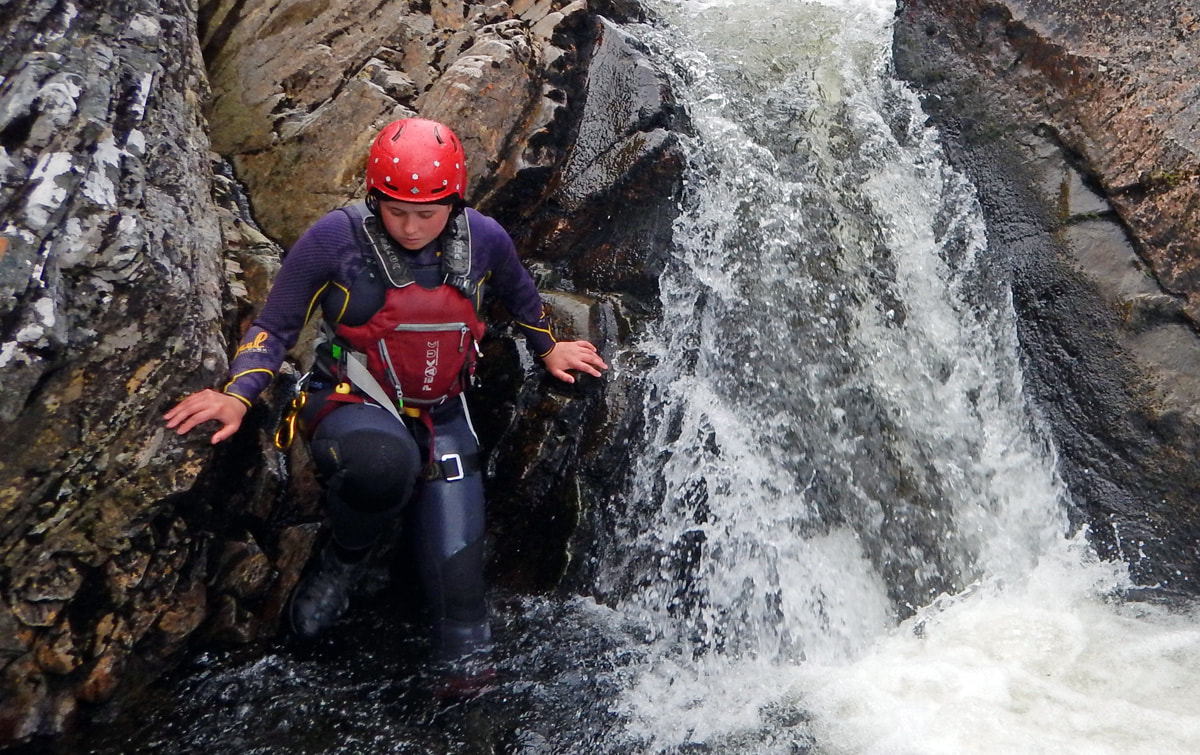
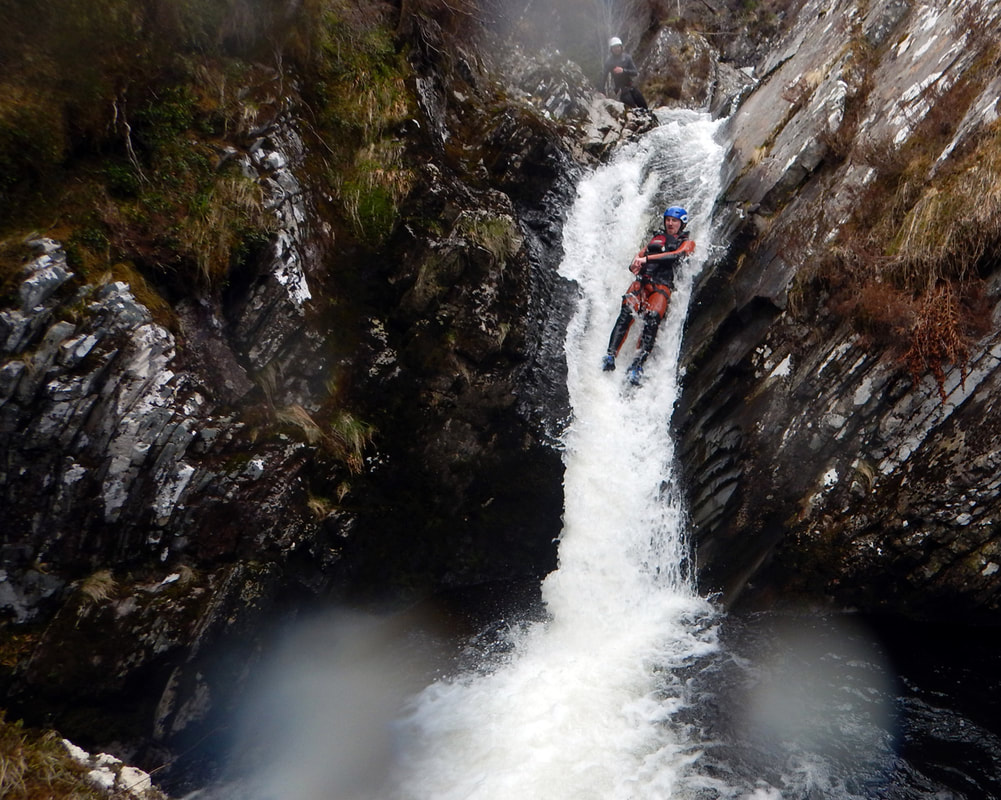
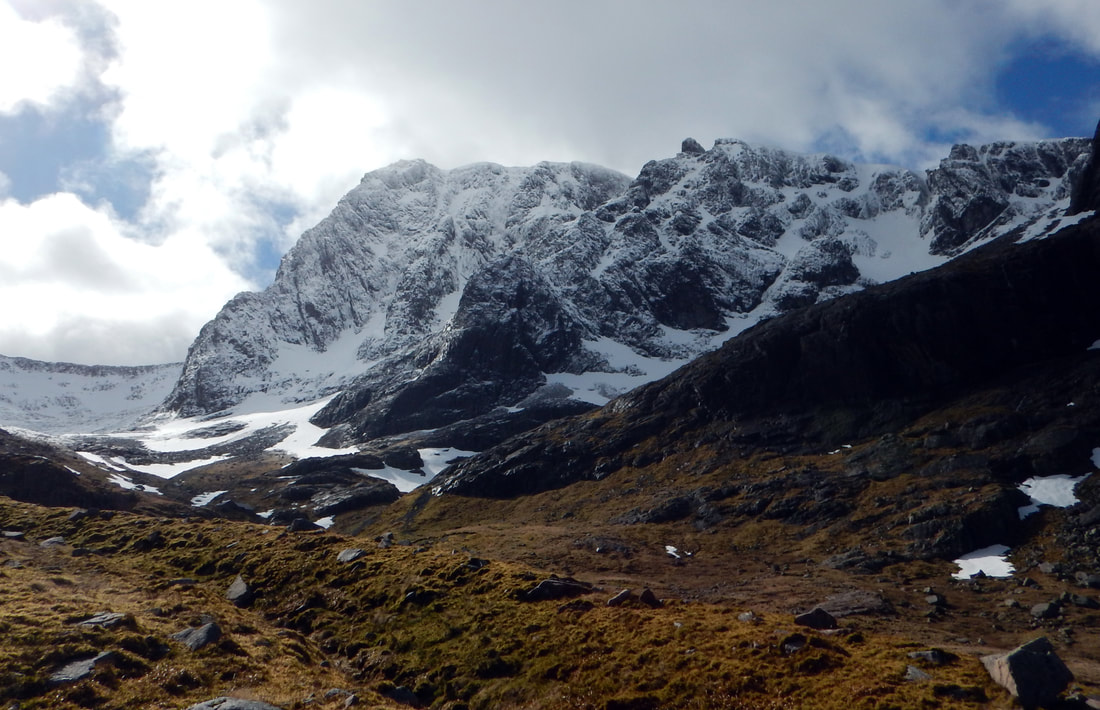
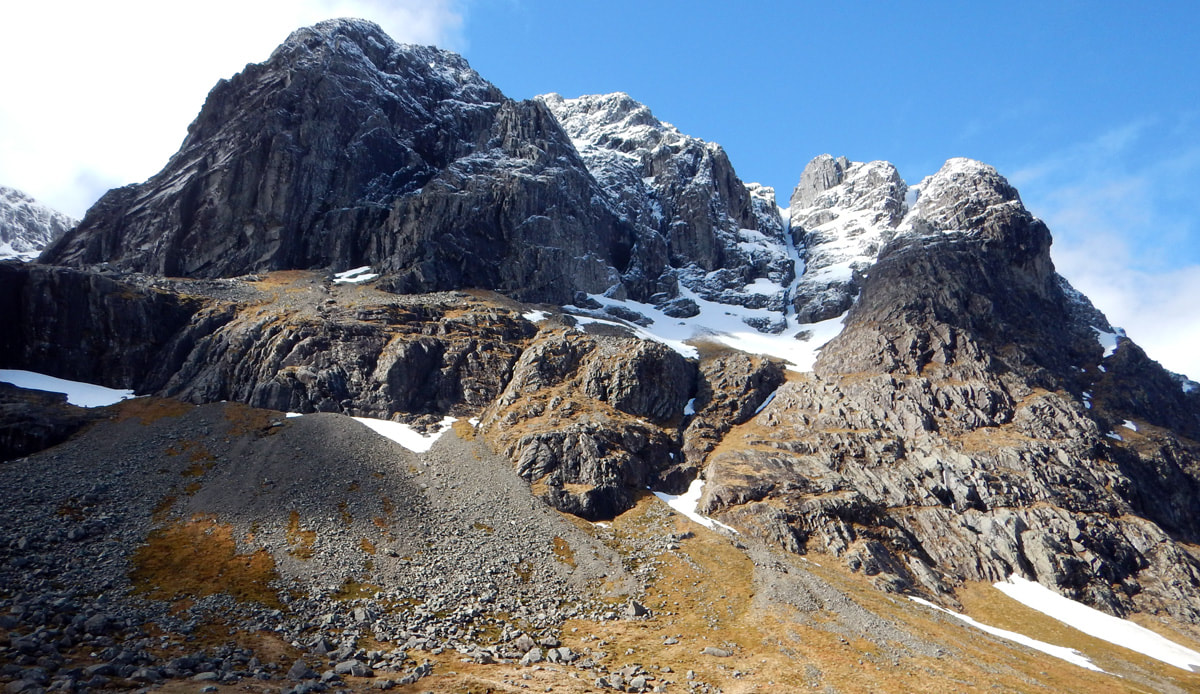
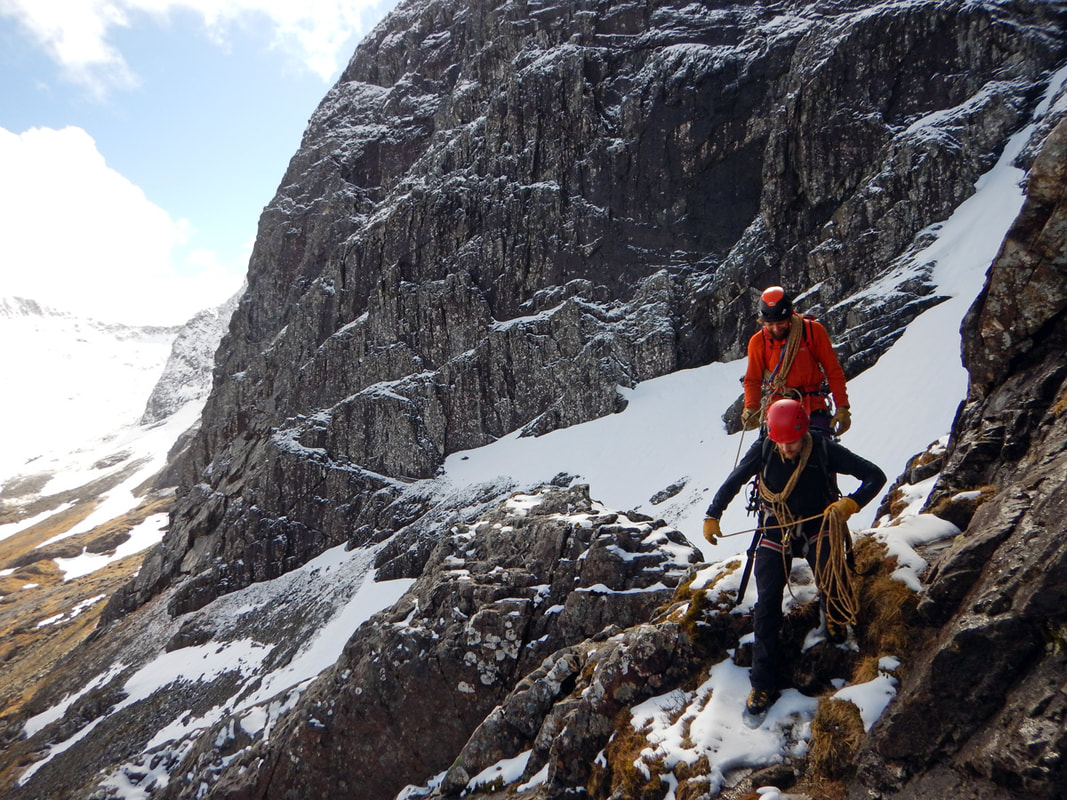
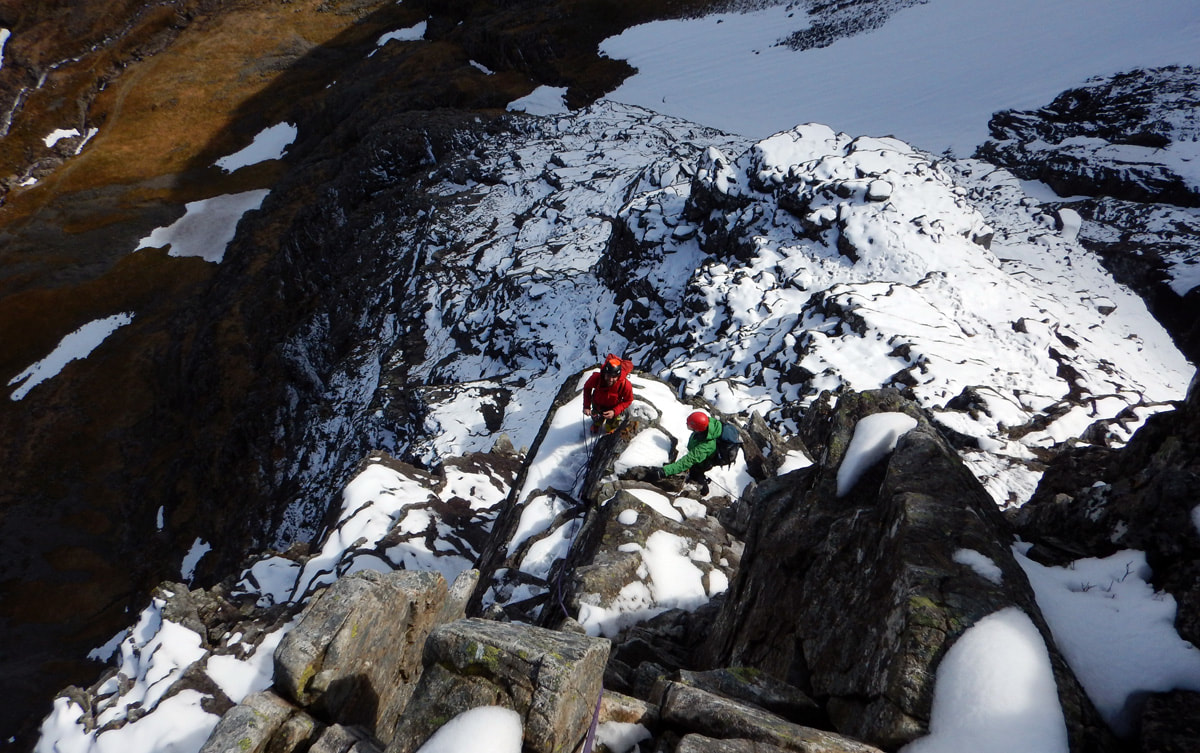
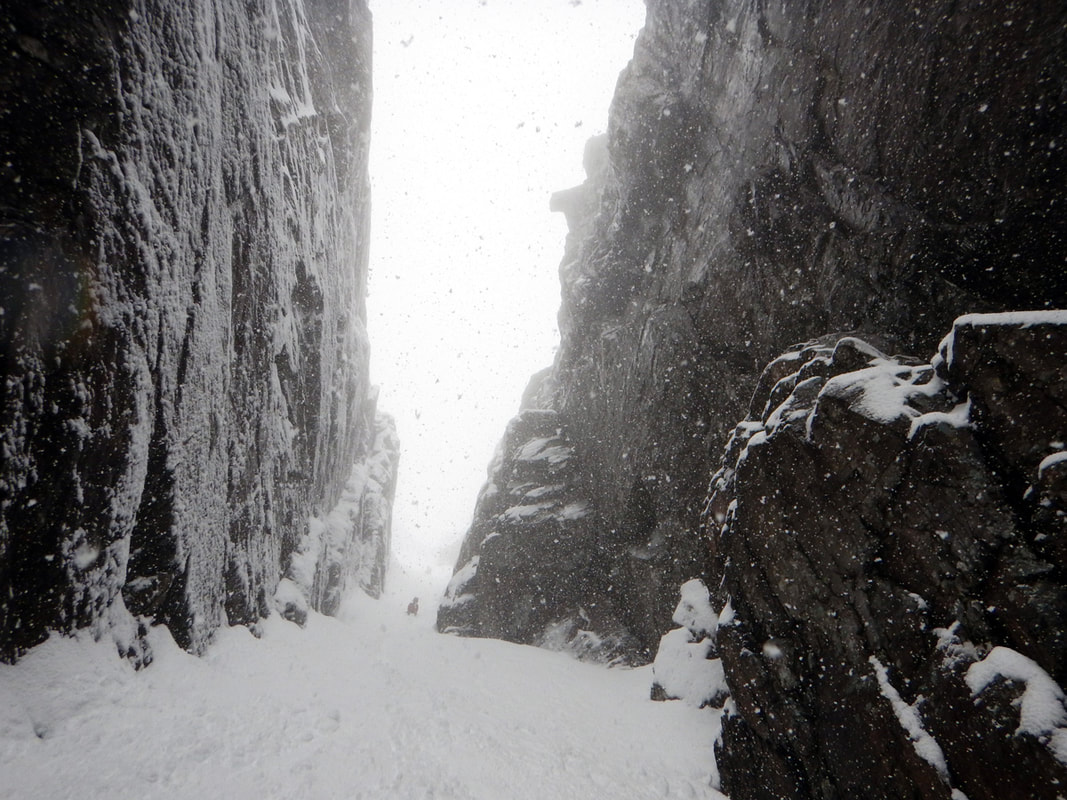
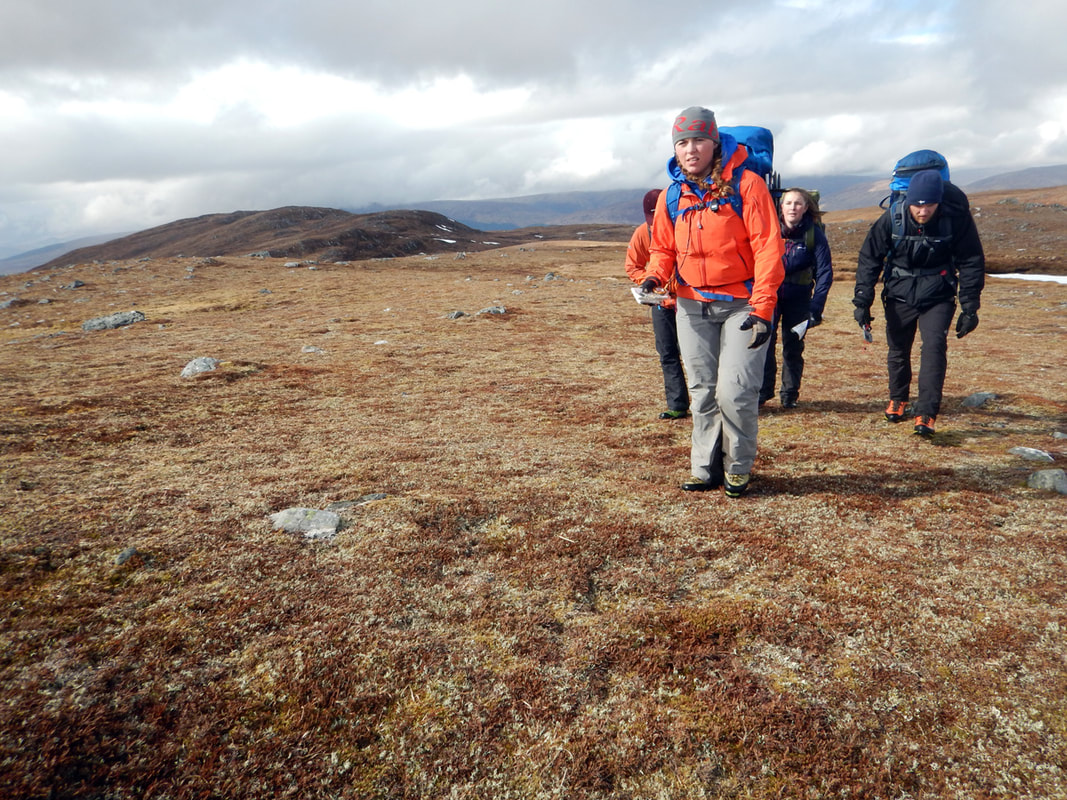
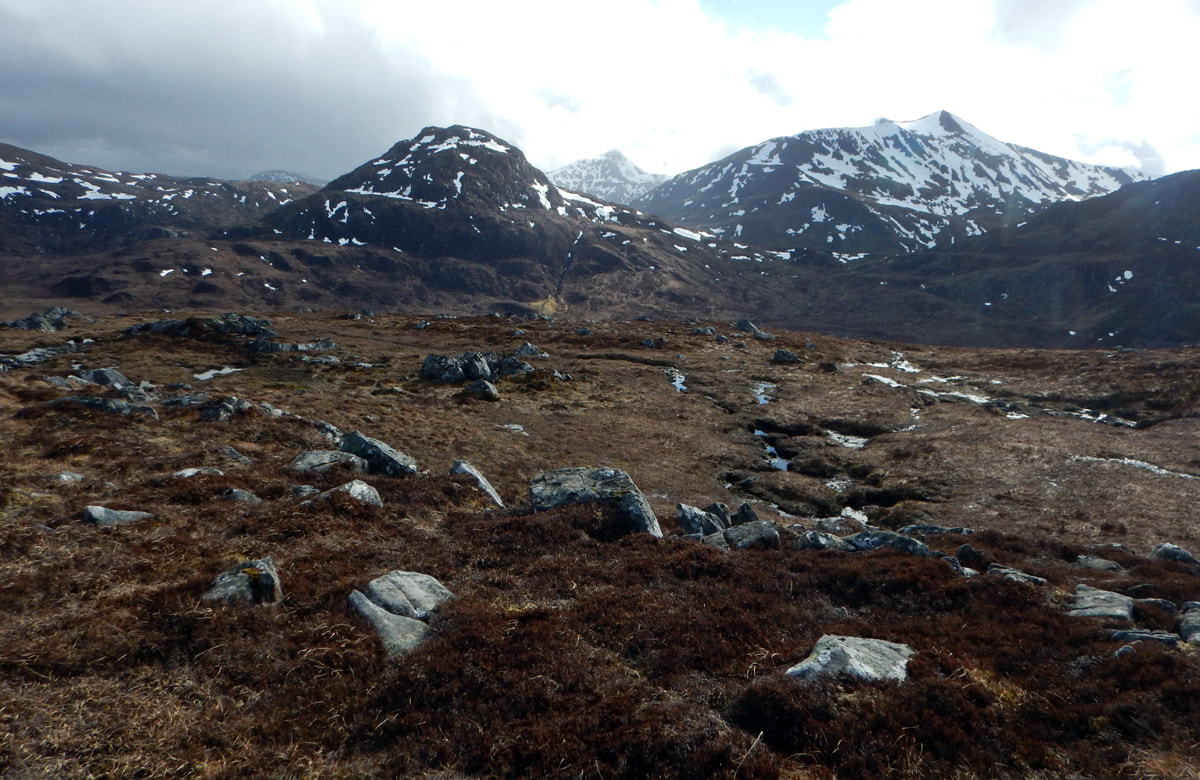
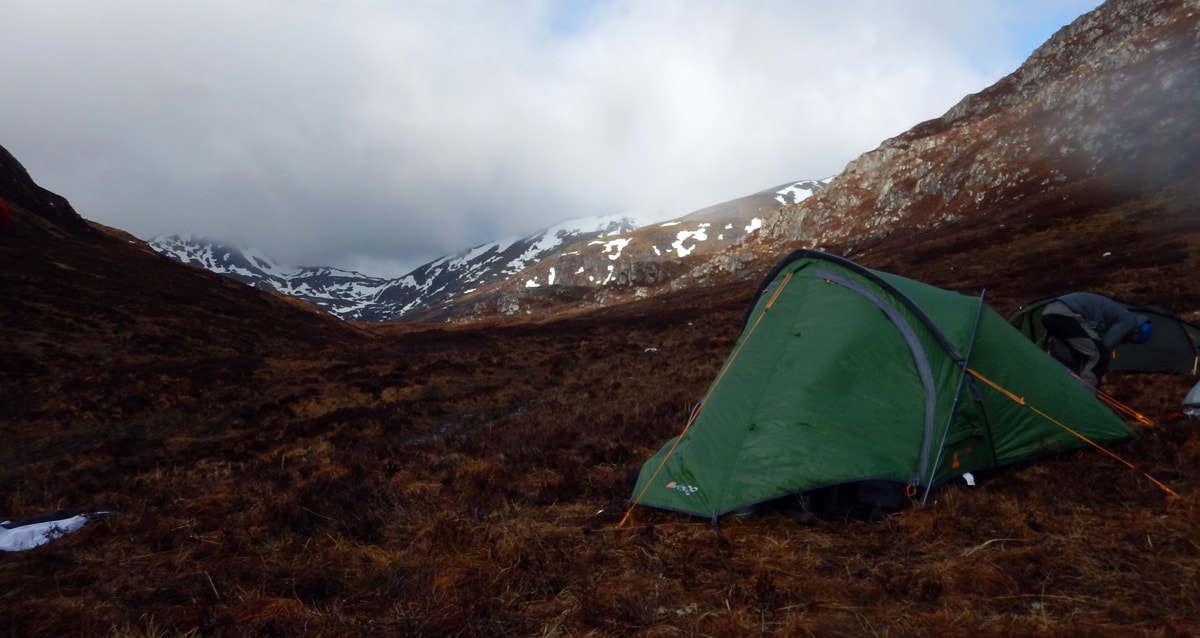

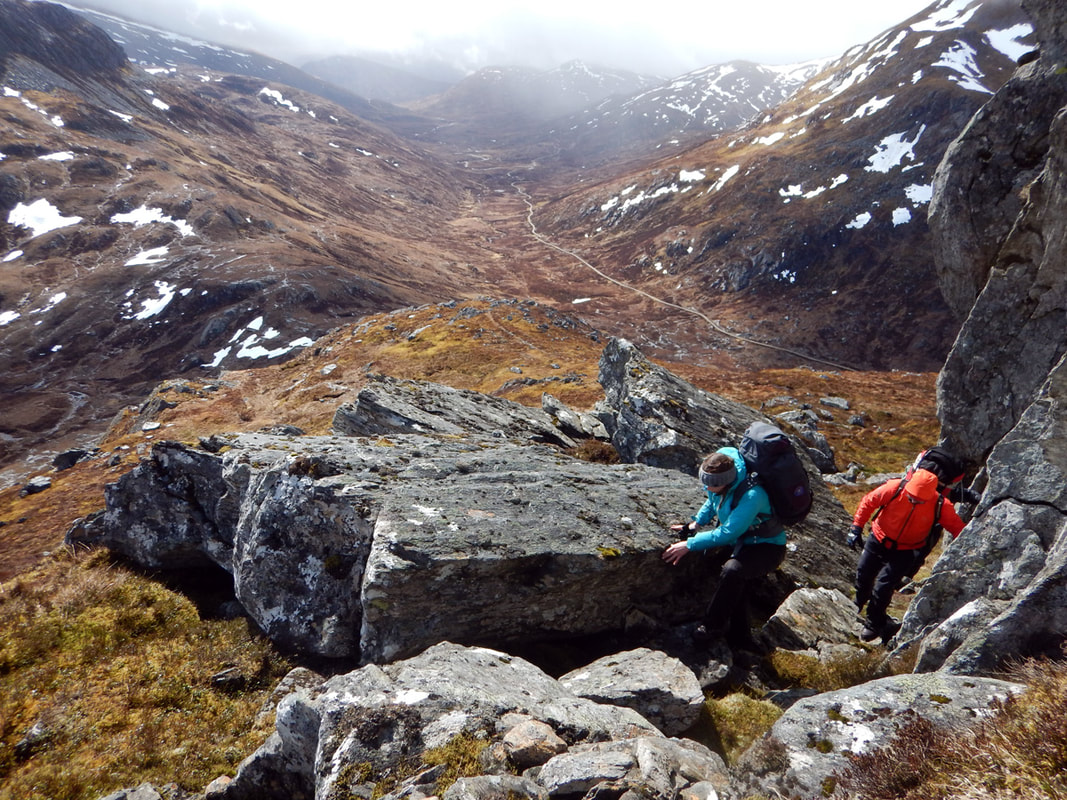
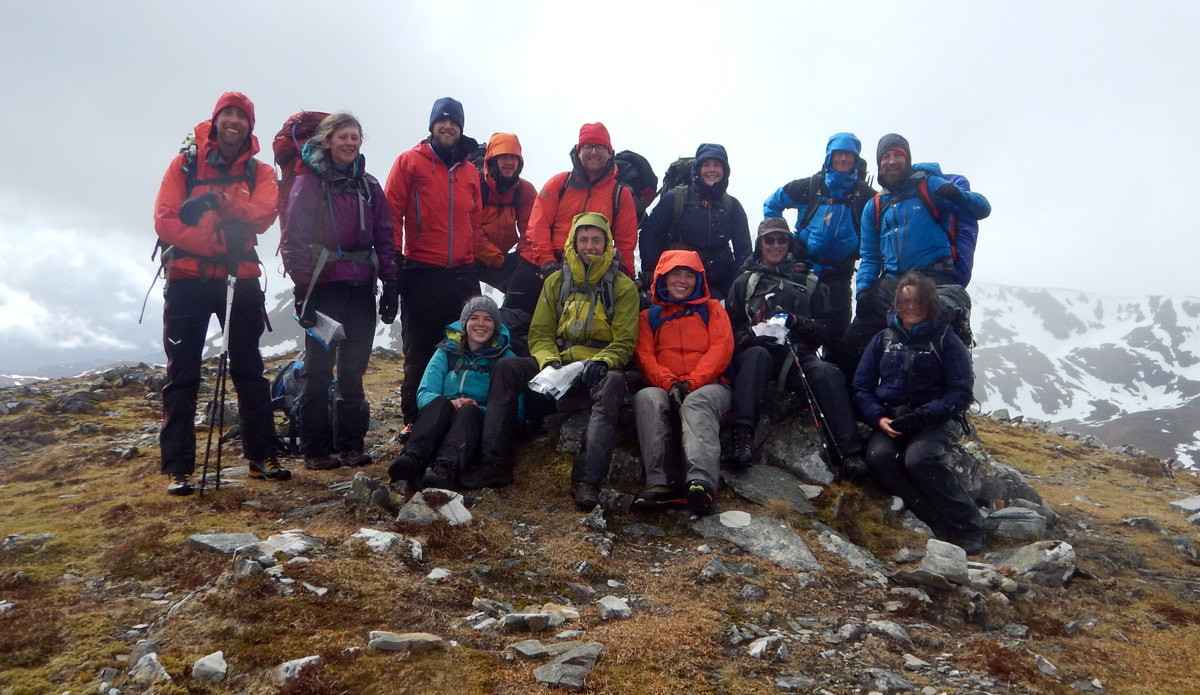
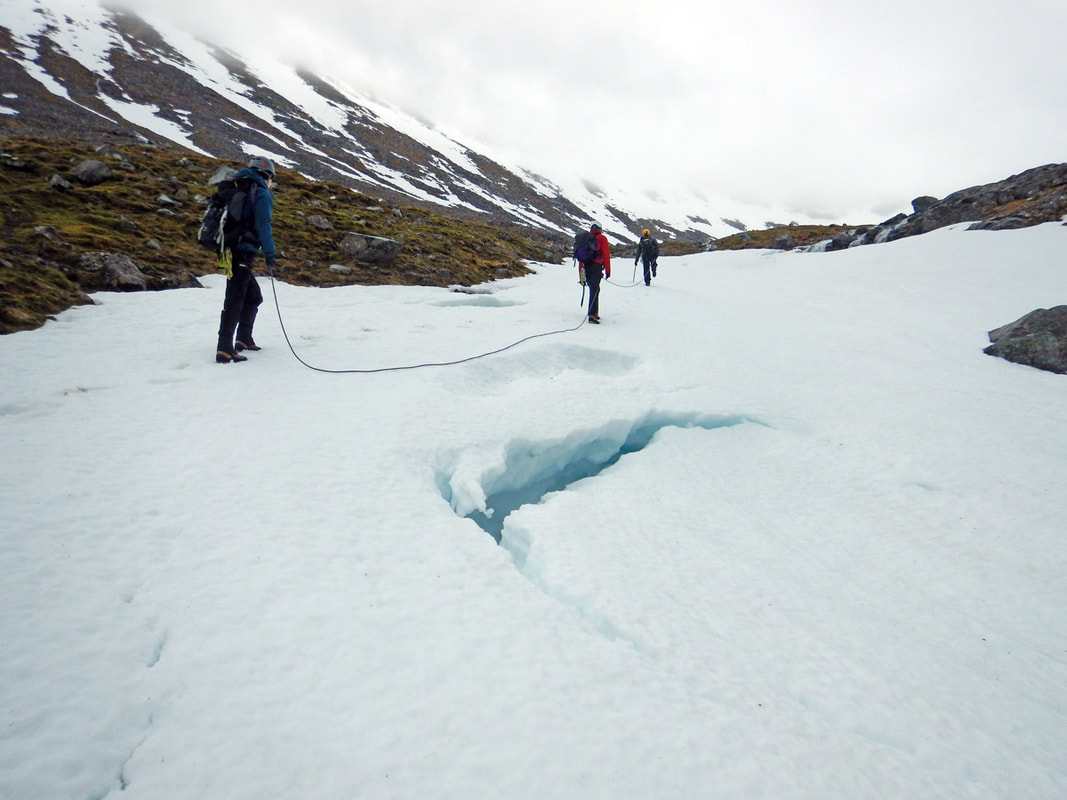

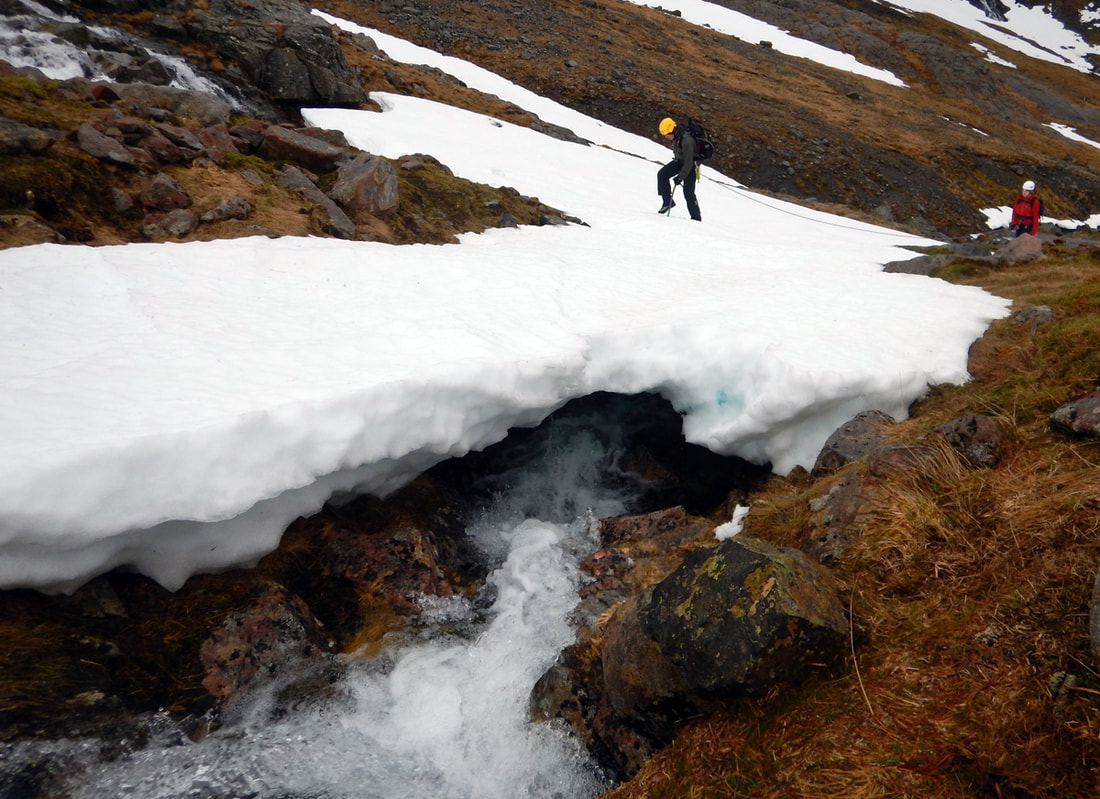
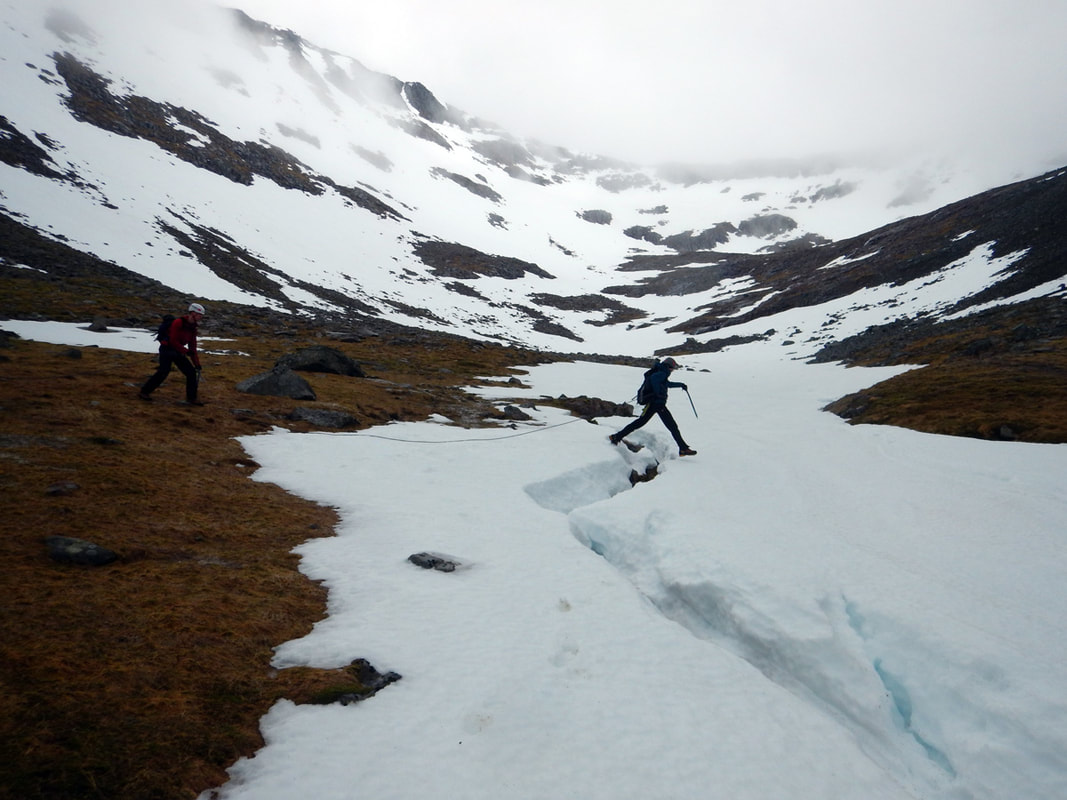
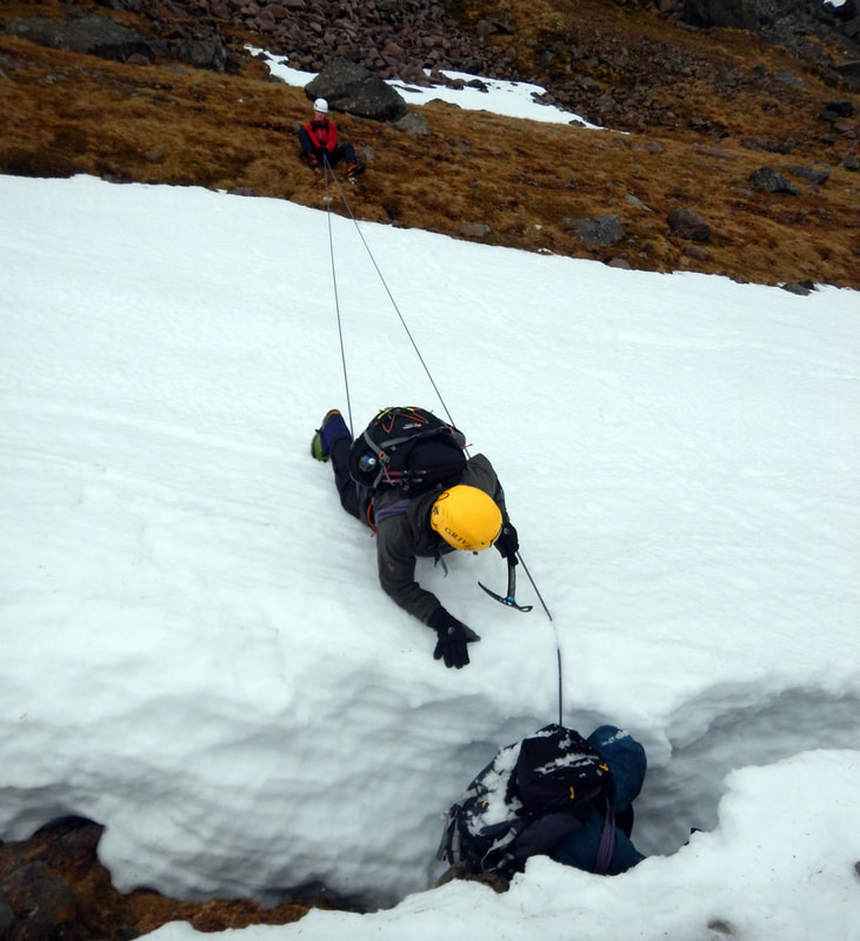
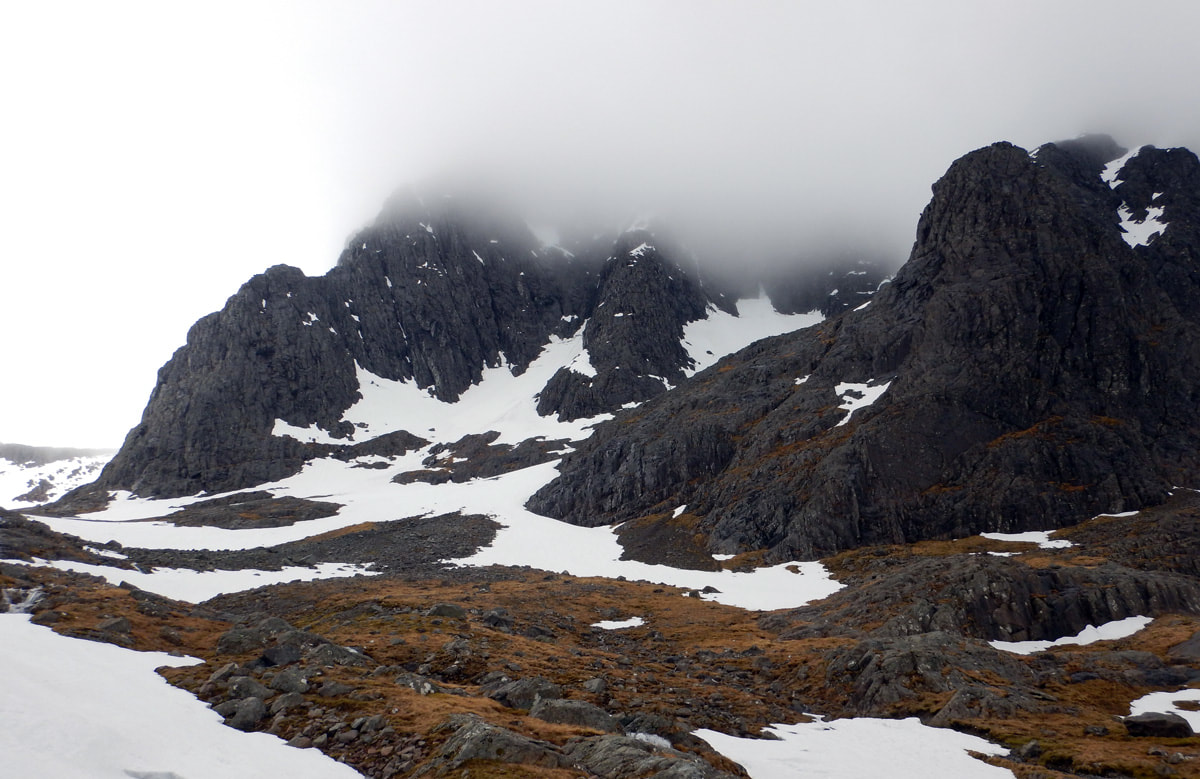
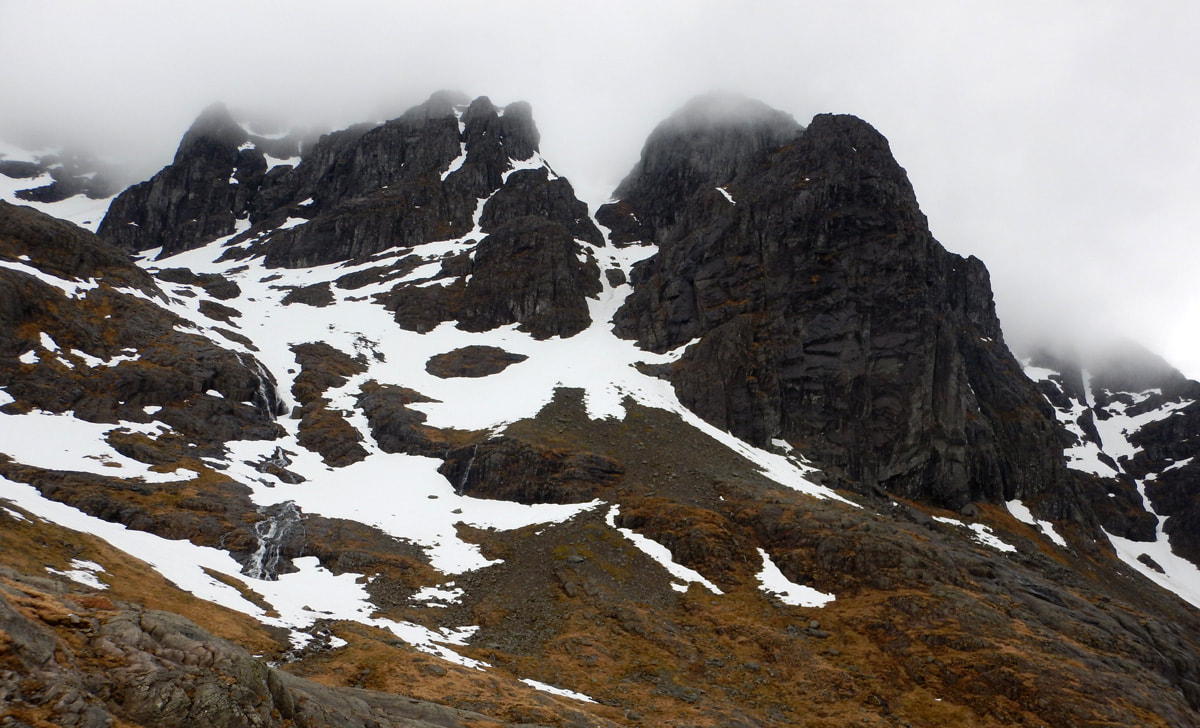
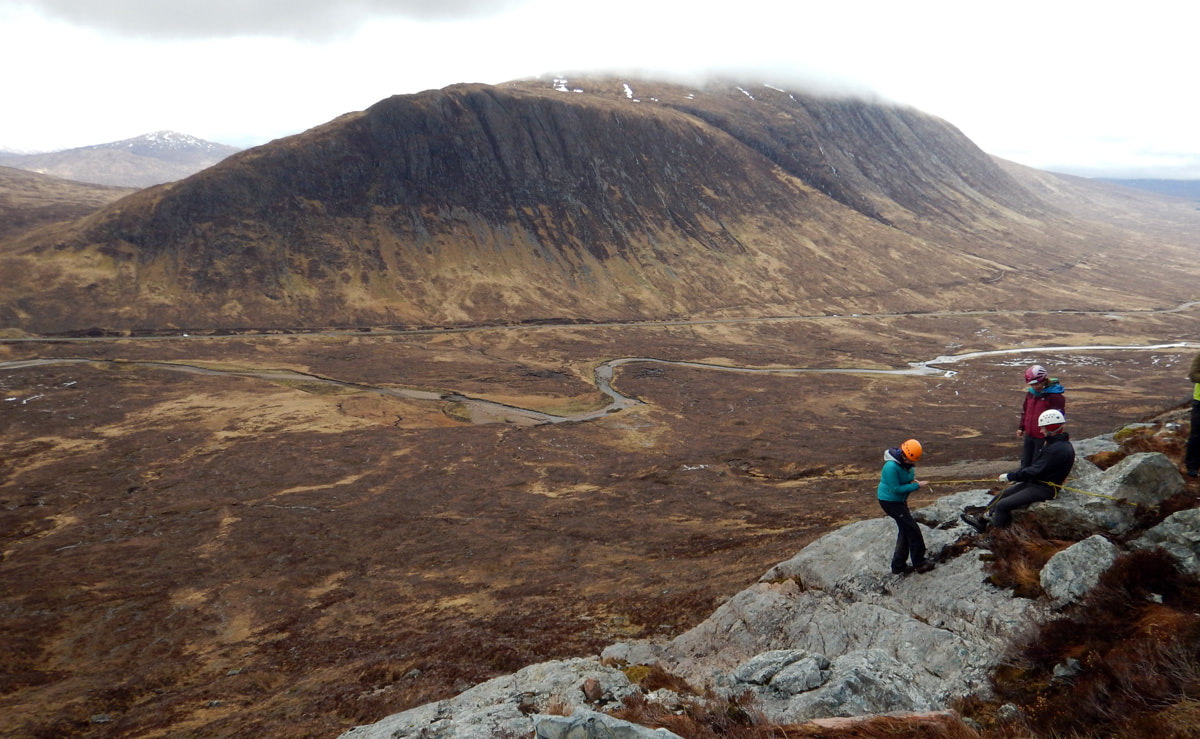
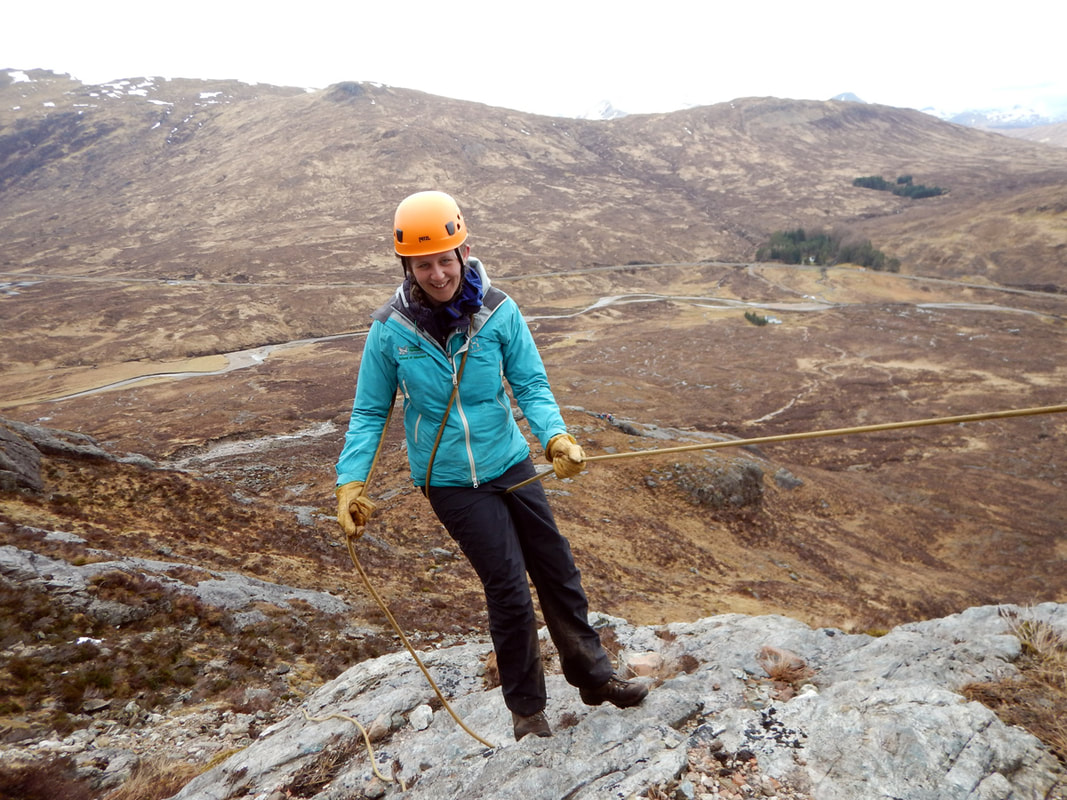


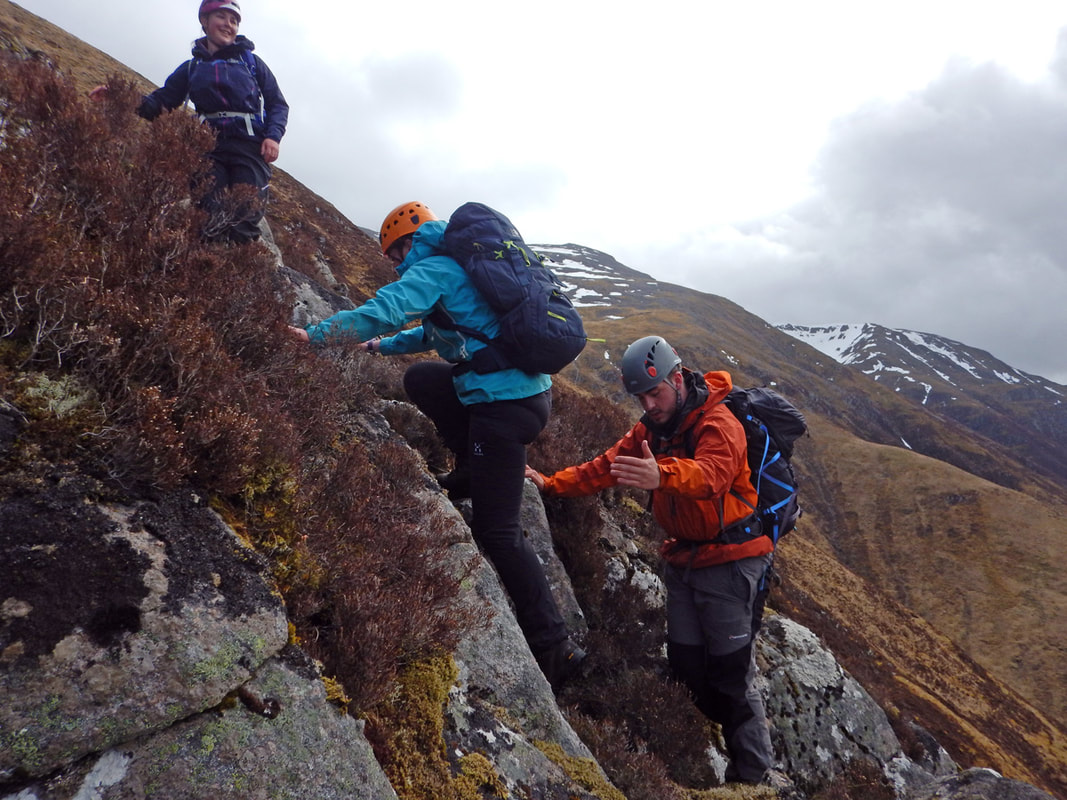
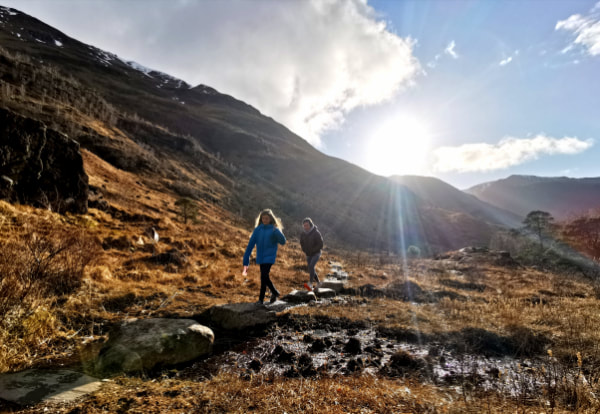

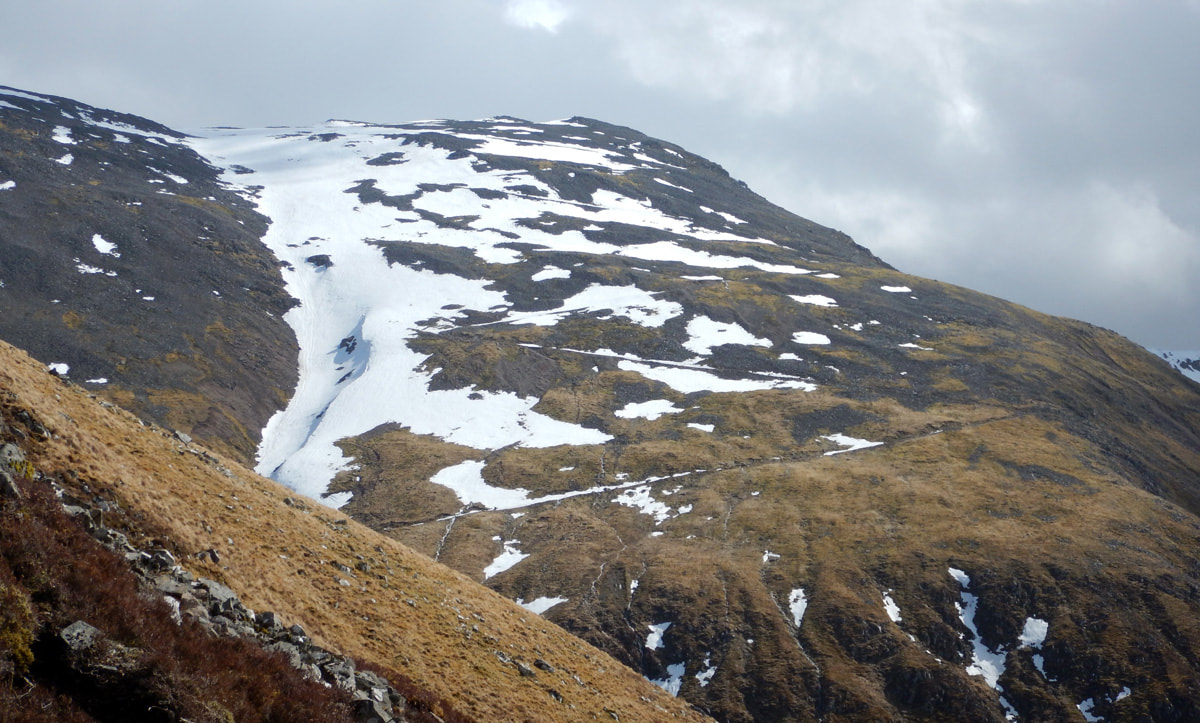

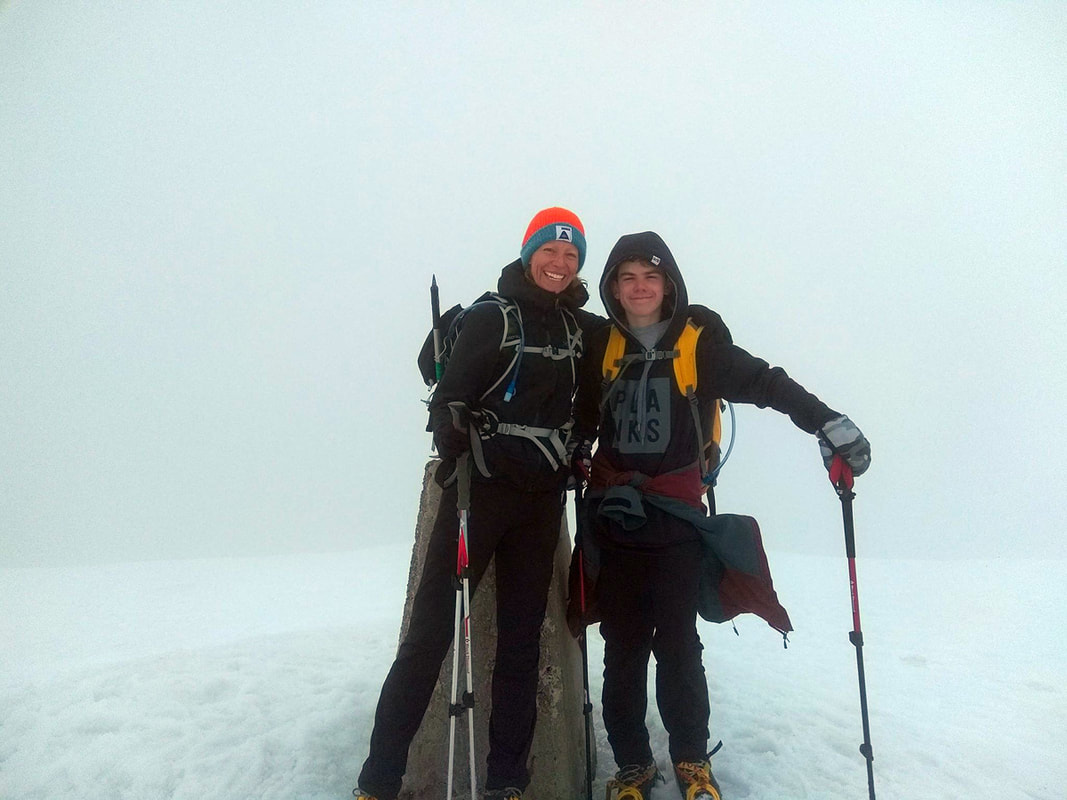

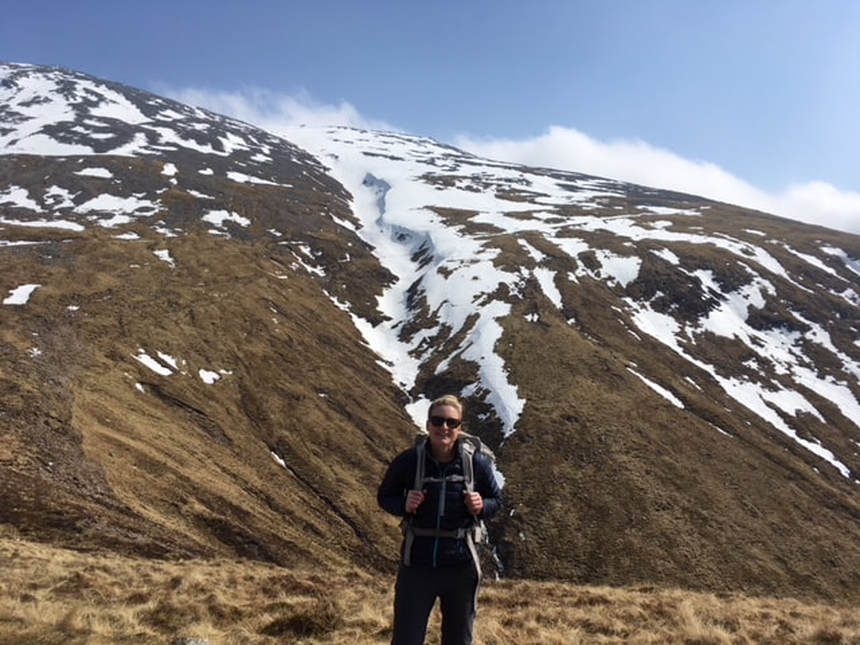

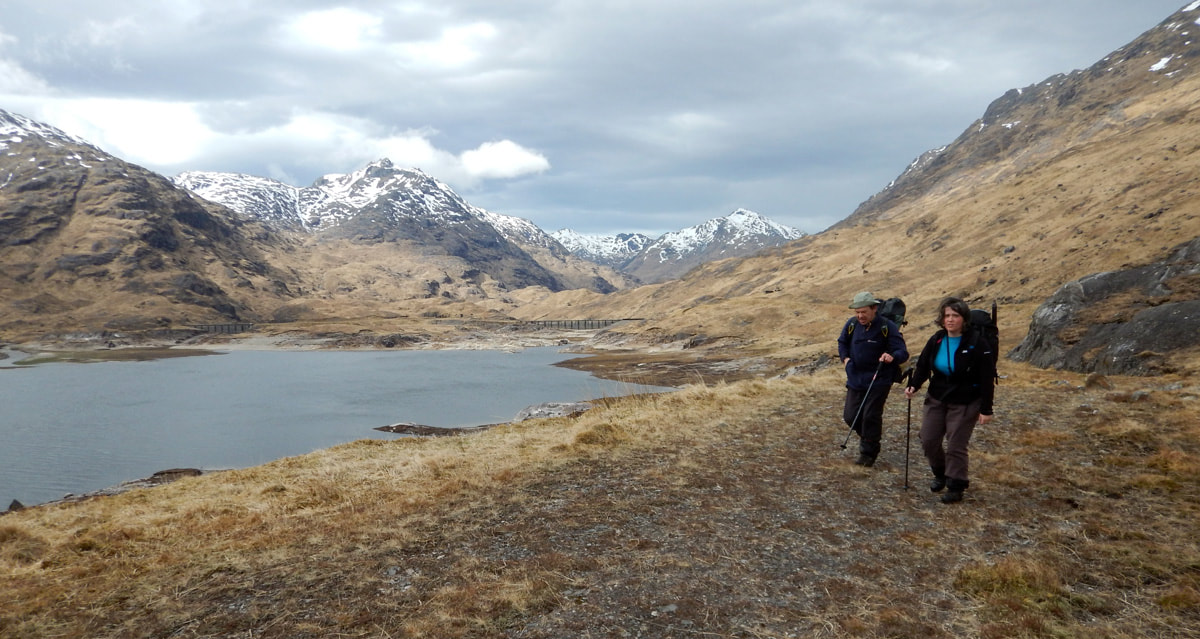
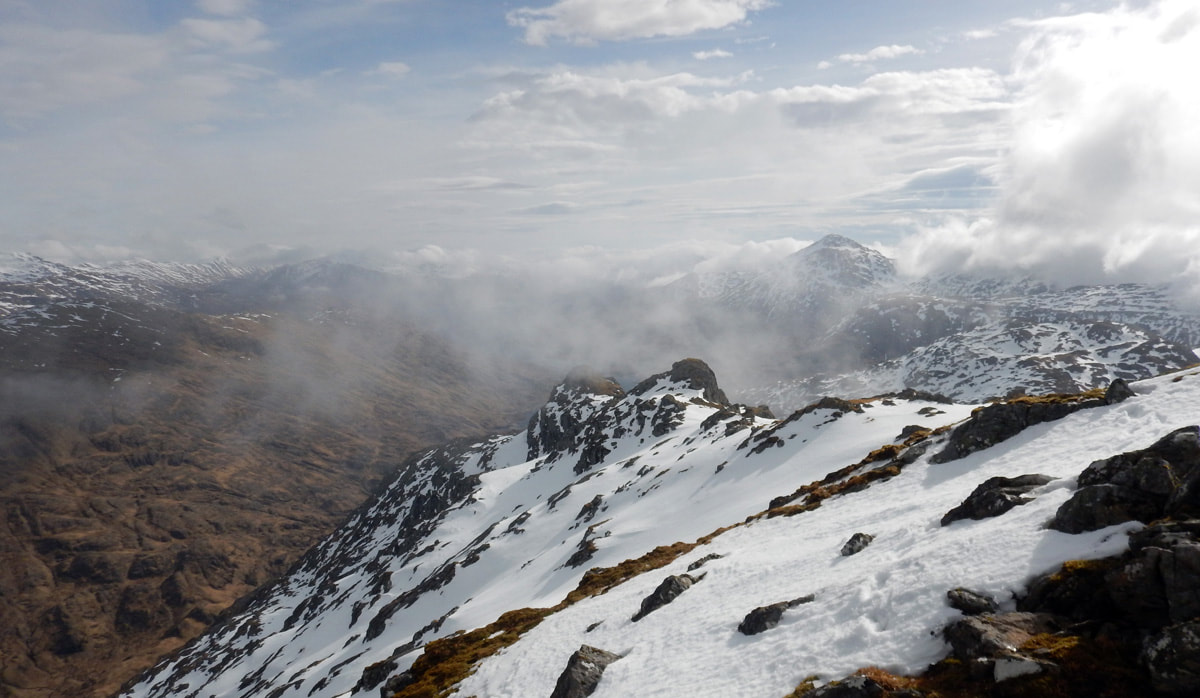
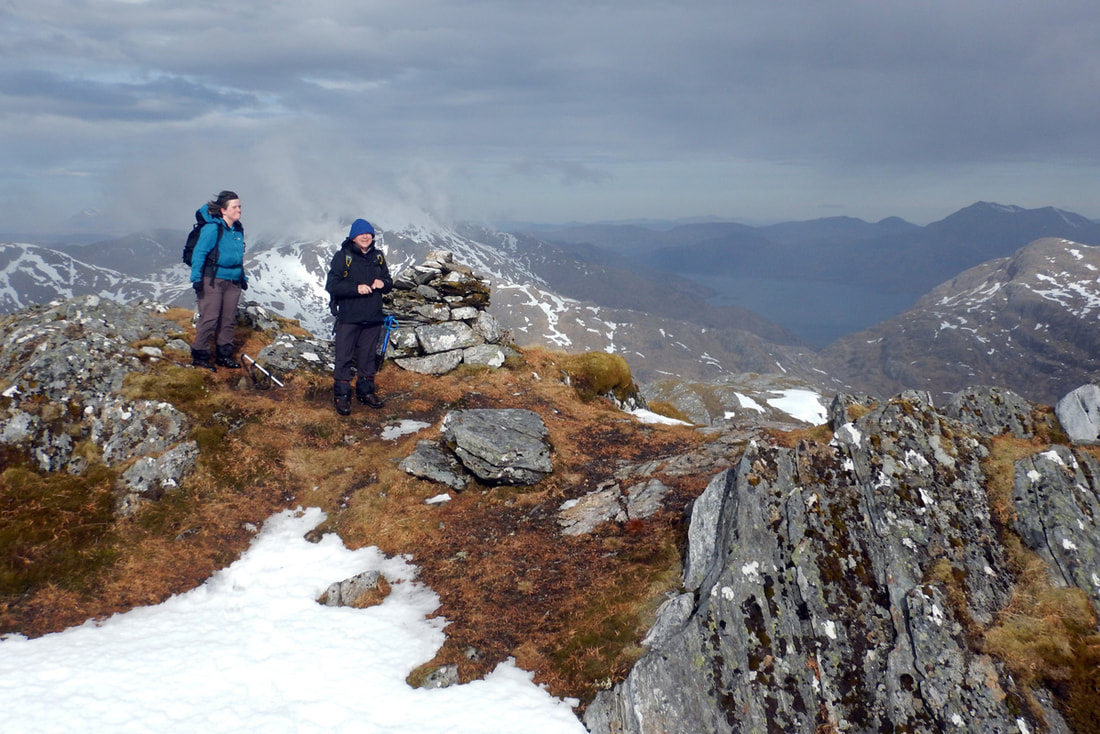

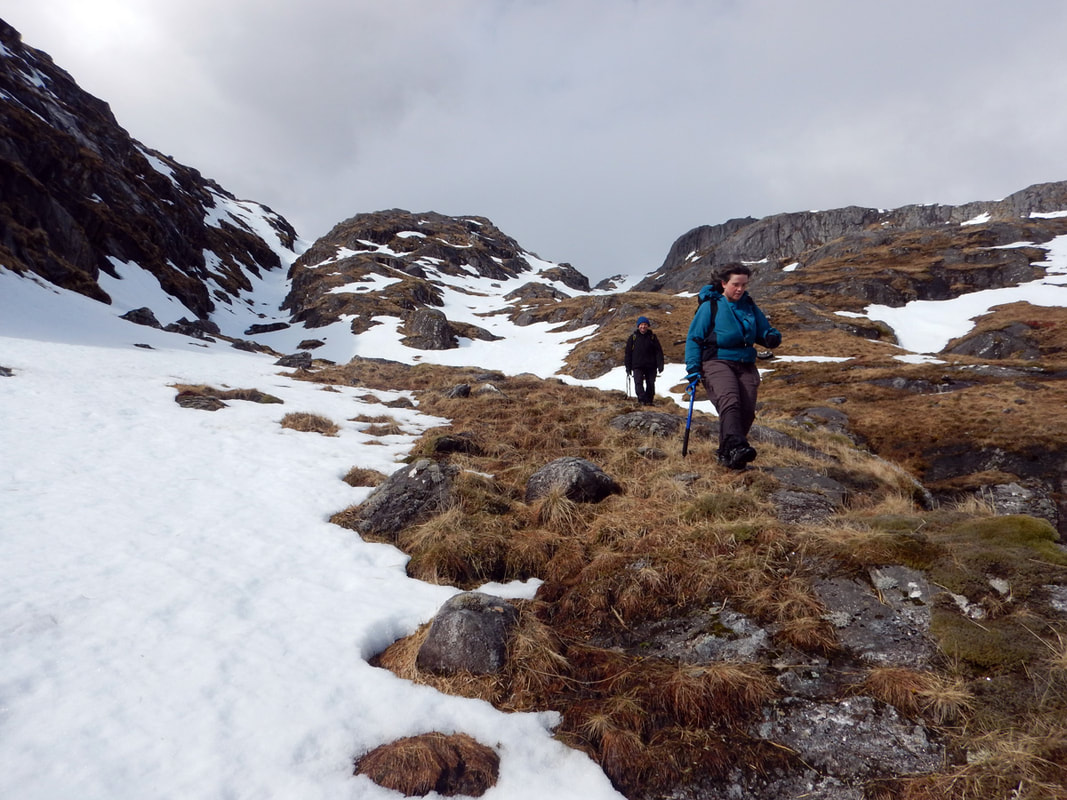
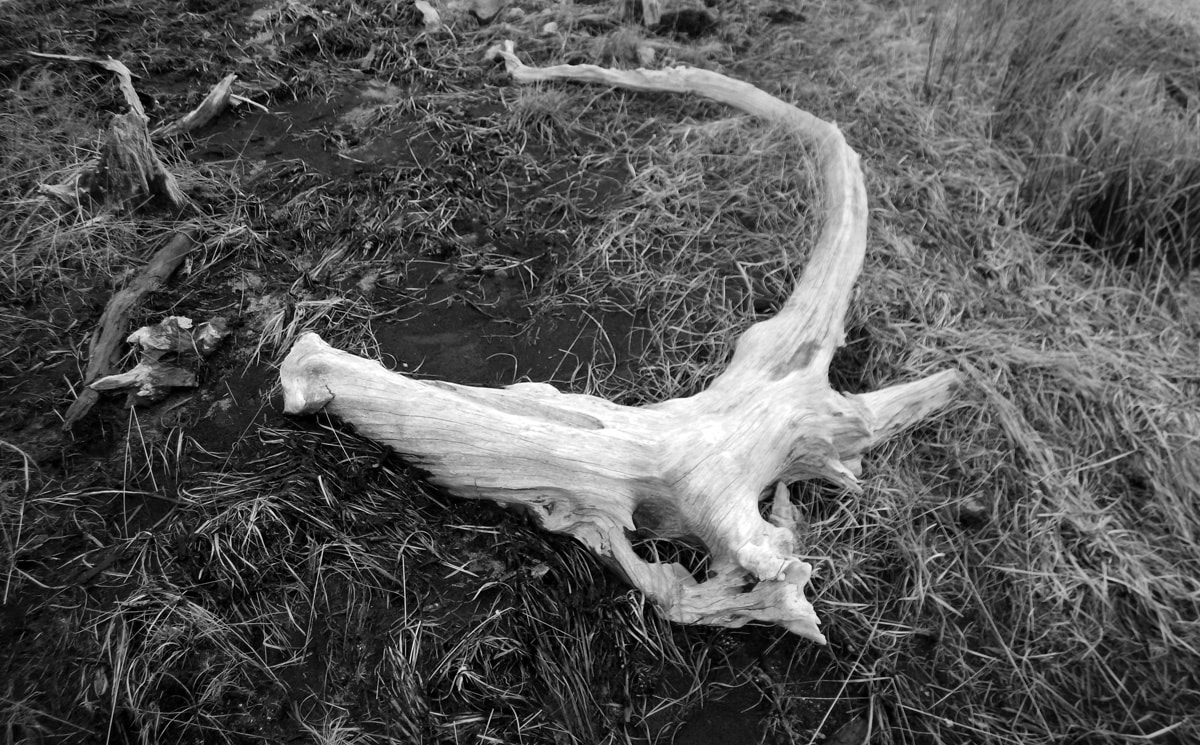
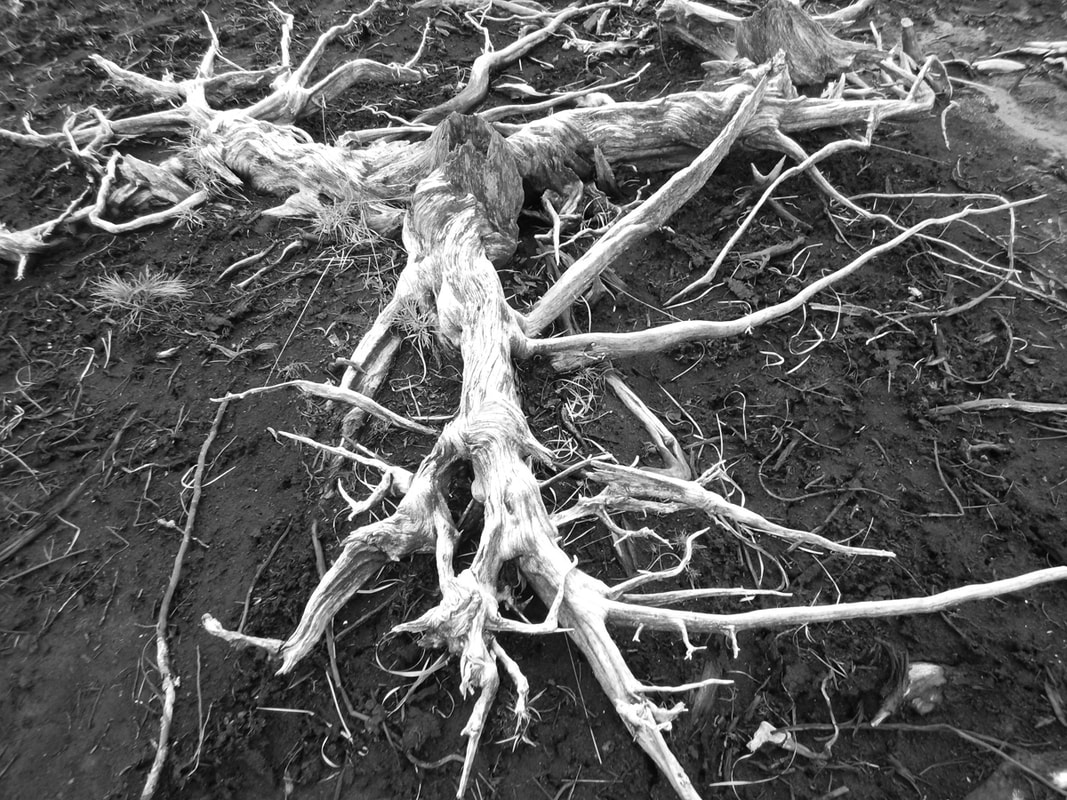
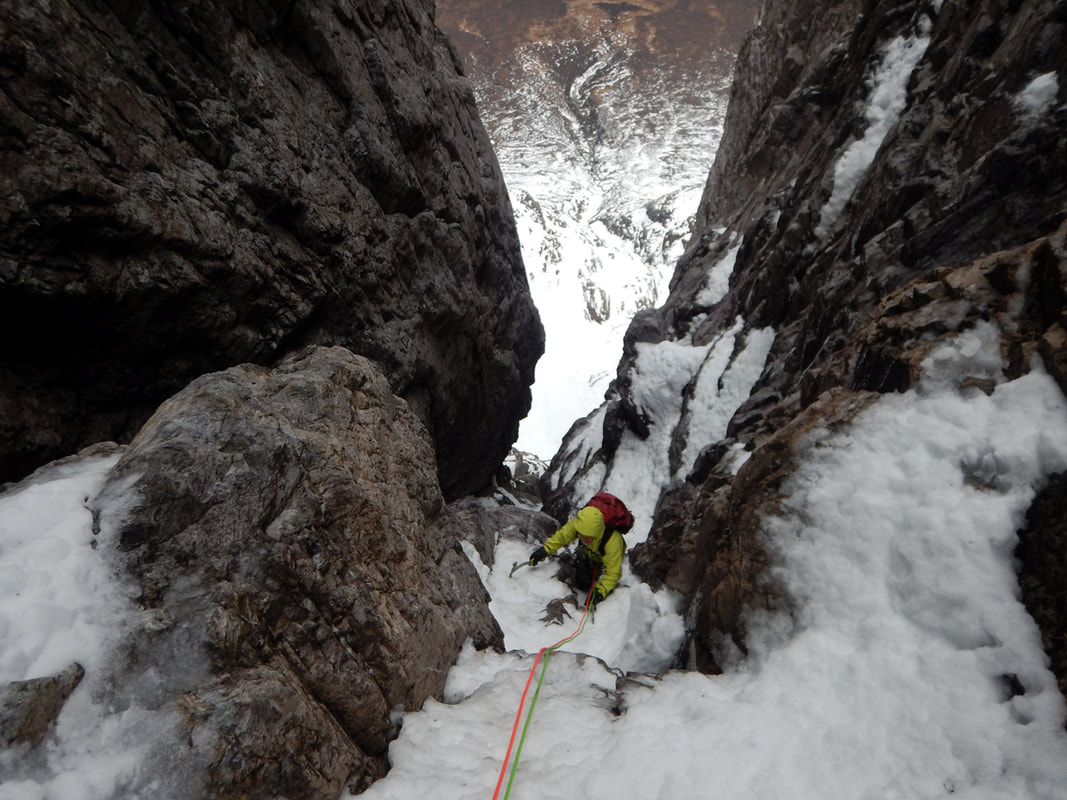
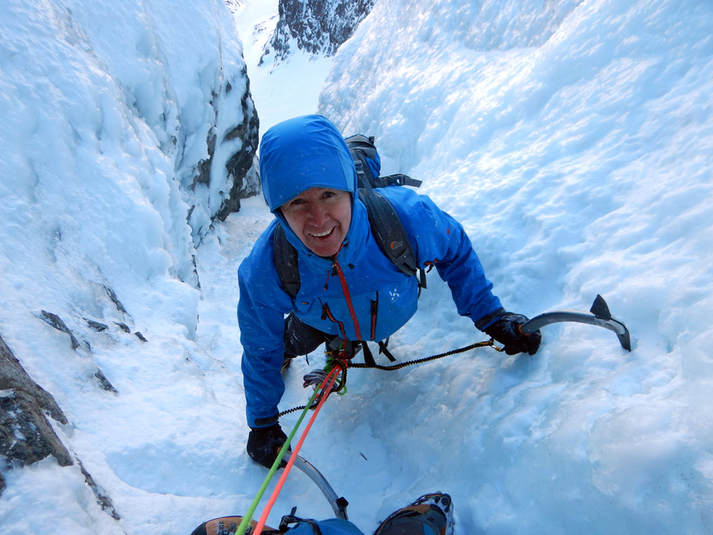
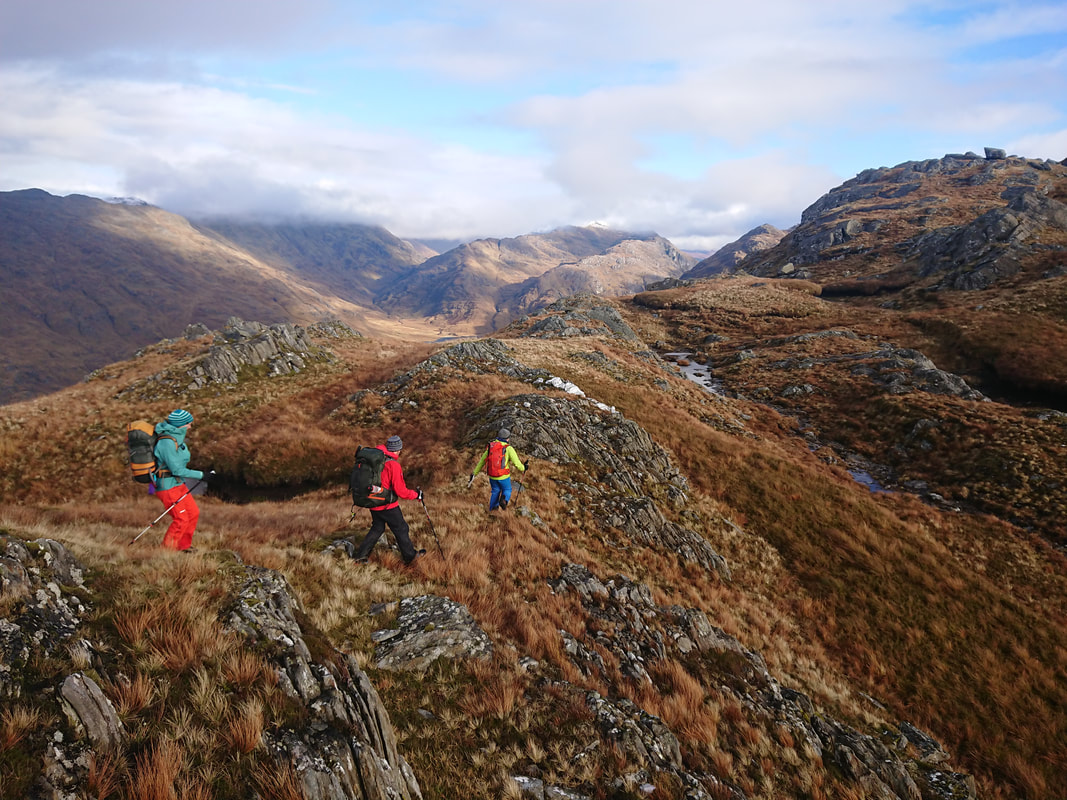
 RSS Feed
RSS Feed
